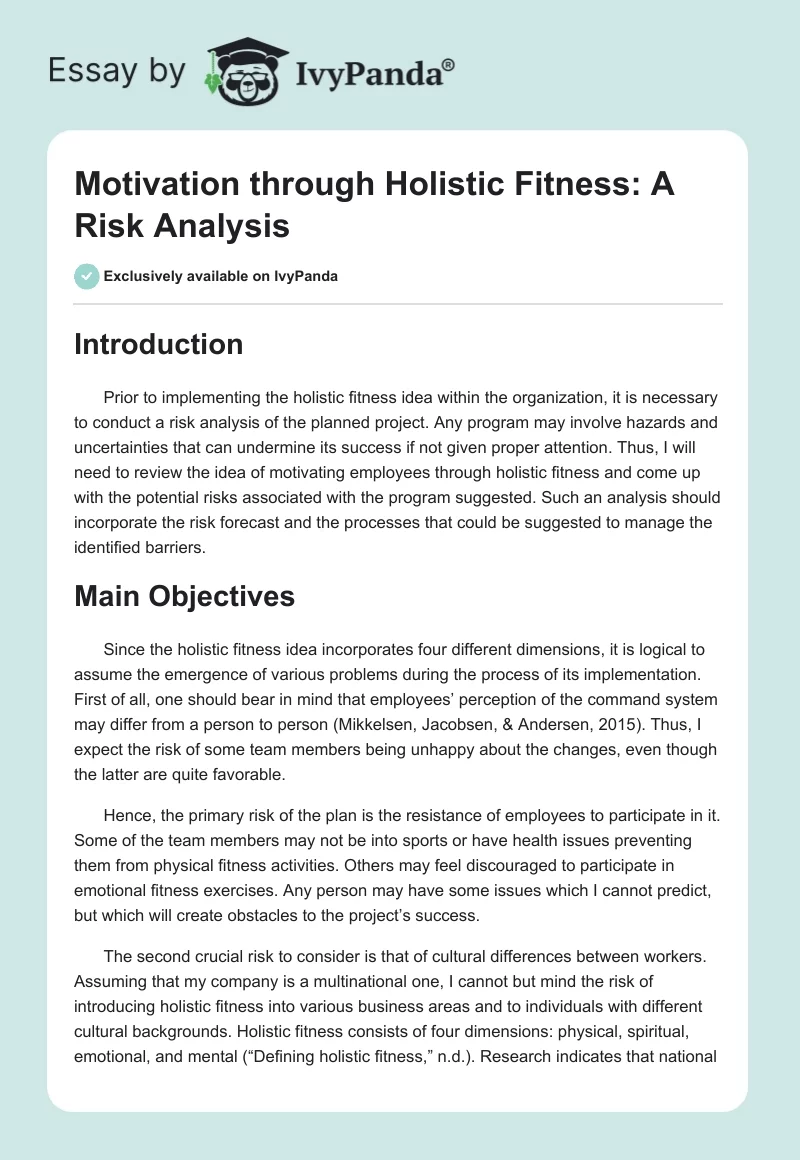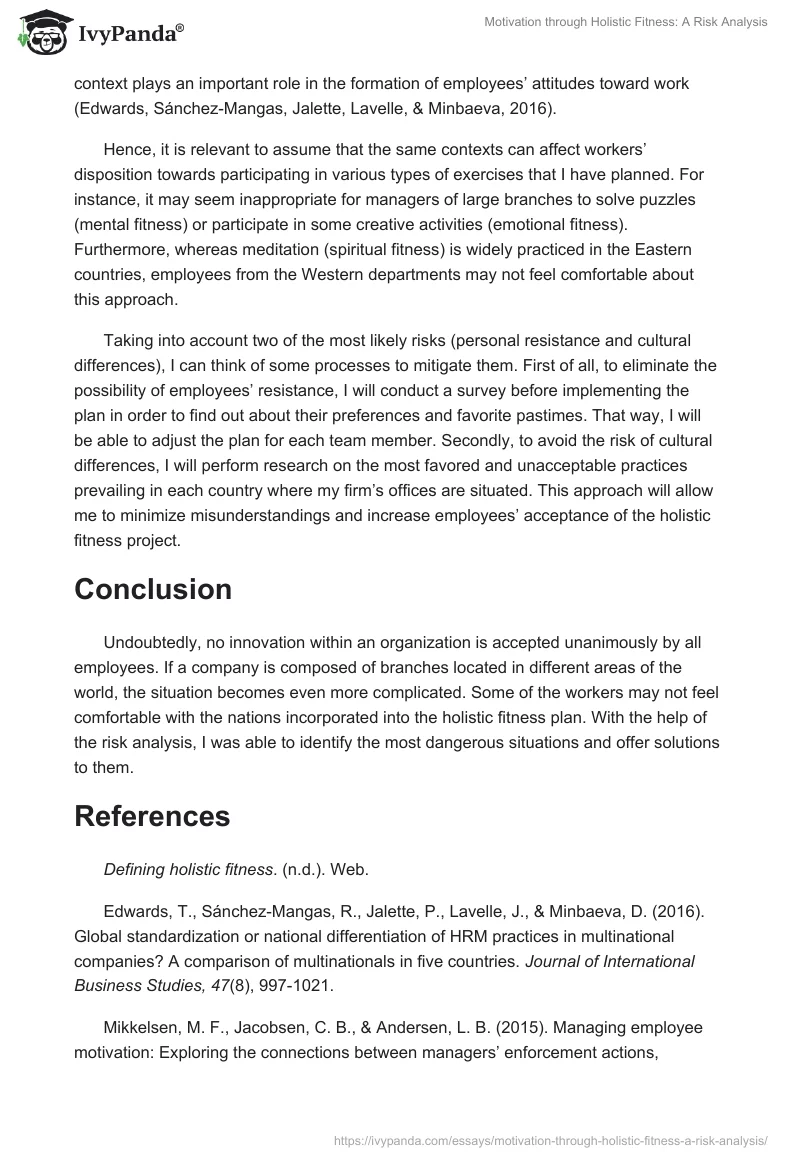Introduction
Prior to implementing the holistic fitness idea within the organization, it is necessary to conduct a risk analysis of the planned project. Any program may involve hazards and uncertainties that can undermine its success if not given proper attention. Thus, I will need to review the idea of motivating employees through holistic fitness and come up with the potential risks associated with the program suggested. Such an analysis should incorporate the risk forecast and the processes that could be suggested to manage the identified barriers.
Main Objectives
Since the holistic fitness idea incorporates four different dimensions, it is logical to assume the emergence of various problems during the process of its implementation. First of all, one should bear in mind that employees’ perception of the command system may differ from a person to person (Mikkelsen, Jacobsen, & Andersen, 2015). Thus, I expect the risk of some team members being unhappy about the changes, even though the latter are quite favorable.
Hence, the primary risk of the plan is the resistance of employees to participate in it. Some of the team members may not be into sports or have health issues preventing them from physical fitness activities. Others may feel discouraged to participate in emotional fitness exercises. Any person may have some issues which I cannot predict, but which will create obstacles to the project’s success.
The second crucial risk to consider is that of cultural differences between workers. Assuming that my company is a multinational one, I cannot but mind the risk of introducing holistic fitness into various business areas and to individuals with different cultural backgrounds. Holistic fitness consists of four dimensions: physical, spiritual, emotional, and mental (“Defining holistic fitness,” n.d.). Research indicates that national context plays an important role in the formation of employees’ attitudes toward work (Edwards, Sánchez-Mangas, Jalette, Lavelle, & Minbaeva, 2016).
Hence, it is relevant to assume that the same contexts can affect workers’ disposition towards participating in various types of exercises that I have planned. For instance, it may seem inappropriate for managers of large branches to solve puzzles (mental fitness) or participate in some creative activities (emotional fitness). Furthermore, whereas meditation (spiritual fitness) is widely practiced in the Eastern countries, employees from the Western departments may not feel comfortable about this approach.
Taking into account two of the most likely risks (personal resistance and cultural differences), I can think of some processes to mitigate them. First of all, to eliminate the possibility of employees’ resistance, I will conduct a survey before implementing the plan in order to find out about their preferences and favorite pastimes. That way, I will be able to adjust the plan for each team member. Secondly, to avoid the risk of cultural differences, I will perform research on the most favored and unacceptable practices prevailing in each country where my firm’s offices are situated. This approach will allow me to minimize misunderstandings and increase employees’ acceptance of the holistic fitness project.
Conclusion
Undoubtedly, no innovation within an organization is accepted unanimously by all employees. If a company is composed of branches located in different areas of the world, the situation becomes even more complicated. Some of the workers may not feel comfortable with the nations incorporated into the holistic fitness plan. With the help of the risk analysis, I was able to identify the most dangerous situations and offer solutions to them.
References
Defining holistic fitness. (n.d.). Web.
Edwards, T., Sánchez-Mangas, R., Jalette, P., Lavelle, J., & Minbaeva, D. (2016). Global standardization or national differentiation of HRM practices in multinational companies? A comparison of multinationals in five countries. Journal of International Business Studies, 47(8), 997-1021.
Mikkelsen, M. F., Jacobsen, C. B., & Andersen, L. B. (2015). Managing employee motivation: Exploring the connections between managers’ enforcement actions, employee perceptions, and employee intrinsic motivation. International Public Management Journal, 20(2), 183-205.


